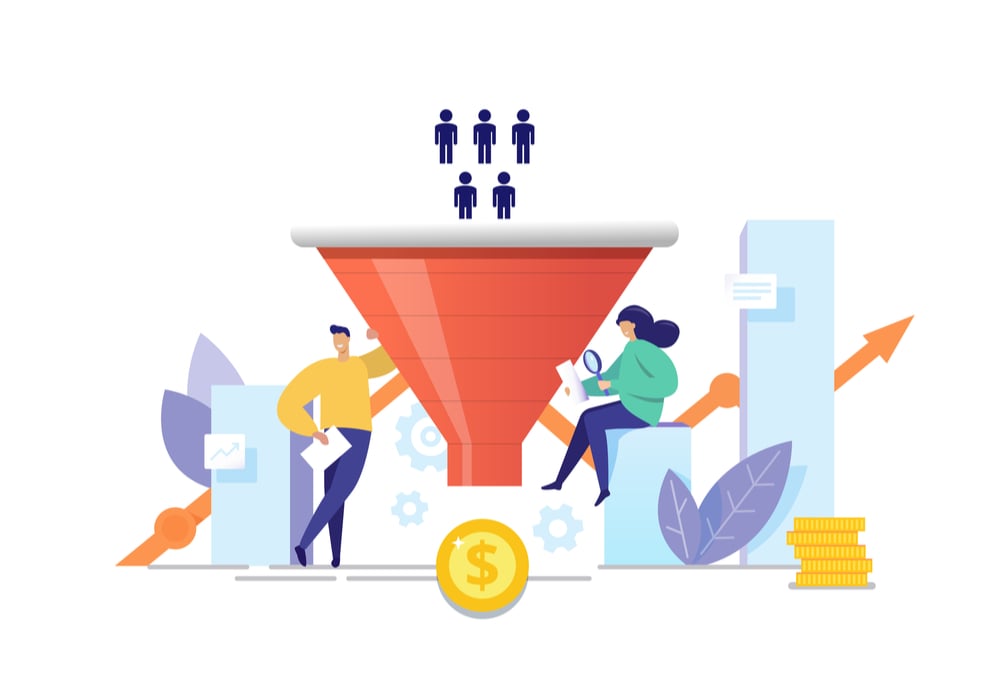
There's no doubt about it; there's an endless amount of information you need to learn to run a successful digital marketing business. No matter how much research you do, there's always more to discover. Now you've found yourself down the rabbit hole again, and you're probably full of questions about Google Ads conversion rates.
How does this affect your business? What can you do to improve your data? When do you know your ads are effective? Can you find your way out of this research rabbit hole?
Let's dig in and answer all these questions and more! (Okay, maybe not the last one; no one knows the answer to that!)
What Exactly Is Conversion Rate?
In the most direct terms, the percentage of people that visit your site who take the desired action is called your conversion rate. The most common conversions would be submitting an email address, registering for a website, making a purchase, or scheduling an appointment.
In reality, however, this action can be almost any action you’re advertising, so don't let that small list hold you back.
Conversion Rate vs. Click-Through Rate
We must cover click-through rates (CTRs) here as well, as these terms can sometimes be confused for each other. The CTR is the percentage of clicks received per impression. The goal is for this click-through to lead to a conversion.
It's easiest to think of CTR as a measure of the effectiveness of your ads at different stages of your pay-per-click (PPC) campaign. The CTR tells you how often your ad gets clicked on when viewed, while the conversion rate tells you how often customers complete a given action after clicking your ad.
It's important to measure both stats because it gives you valuable insight into improving your marketing. If your display ads have a fantastic CTR but zero conversions, that's a sign that you may need to revisit your landing pages and ad copy.
Calculating Your Conversion Rate
You can manually calculate your conversion rate by dividing how many conversions you received by the total number of people who visited that site or landing page. Then it's as easy as multiplying by 100% to convert the decimal into a more readable percentage.
Luckily, technology comes to the rescue here with a wide array of analytics programs that automatically calculate your conversion rates. Not only is this a time-saver, but platforms like Google Analytics and Google Search Console offer exceptional analysis and visualization tools to give you a better understanding of your data.
Making Sense of the Data
Moving along to the next roadblock. Now that you have more numbers, percentages, and statistics to keep track of, what's next? Let's first talk about what makes a "good" conversion rate.
Industry benchmarks give precious insight into how you're performing compared to others in similar industries. There is a lot of variance from one industry to another, but the average conversion rate across all industries is 4.40% for Google search. For display ads, this percentage drops to 0.57%. These values make sense when you think about them. It's relatively common to click on top-rated search listings, but when's the last time you intentionally clicked on a sidebar or banner ad?
Quality Score Optimization
This is the real gold mine of information. And to get the highest conversion rates possible, you'll need to take some time to optimize each of your ads.
Effects of a Good Quality Score
Improving the quality scores of your ads will have a direct impact on your rankings in search and display networks. Google uses your quality score and some variables to determine where your ad will rank in paid search results.
In the long run, having a high-quality score can mean your site sees more traffic overall. You can expect higher profits from your monthly ad spend by improving quality and paying less per conversion, which is a win-win all around.
Improving Your Quality Score
From your keywords to the landing pages, everything about your ad needs to be relevant. Using unrelated keywords or ineffective ads will lower your overall score. When it comes to getting a high ranking in Google's search network, relevancy and quality are far superior to the number of keywords.
It's also crucial to create multiple variations of your landing pages and ads to track them independently. This can give you more data to compare when moving forward or making future changes.
Here's a small bonus tip to give you a head start on high conversion rates: always prioritize mobile optimization. In recent years, over 50% of all website traffic has come from mobile devices. You can take this as a sure sign that our mobile devices consume more and more of our time.
Take Action
It's time to dig into your Google Ads data to find out what is working and where you can improve. Make any necessary changes and then monitor the results to see what has worked and what hasn't.
You'll learn and progress faster by taking messy action rather than absorbing all of the information and hoping to achieve perfection on the first attempt. You'll be happy to know this method is not only more effective but much easier as well.
Final Takeaway
With all this newfound knowledge, you're officially ready to head out and put it all into practice. This means you need to exit this cozy rabbit hole and apply what you've learned here. There may always be more to learn, but you cannot improve without first using the knowledge.
If you're looking for an external review to point you in the right direction, that's where Sparkinator comes in. Optimizing your ad campaigns is Sparkinator's number one priority. To give you results that are best suited for your unique situation, reach out to us today! You can hit the ground running with a free review of your account.





.png?width=1625&name=logo%20(1).png)